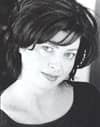 The estimates for attendance at this year’s RSNA meeting are all over the map. At presstime, advance registration was up 3 percent over last year, but we’re all a bit skeptical that the loyal RSNA-goers all will make the journey to Chicago this year. The real diehards of us are hoping the turnout meets expectation.
The estimates for attendance at this year’s RSNA meeting are all over the map. At presstime, advance registration was up 3 percent over last year, but we’re all a bit skeptical that the loyal RSNA-goers all will make the journey to Chicago this year. The real diehards of us are hoping the turnout meets expectation.
Whether you choose to attend, or stay at home, RSNA represents the opportunity to see in person the progress in the science of medical imaging and image guided therapies that has occurred over the past year.
For manufacturers, RSNA is THE show. For radiologists, it’s not an absolute, since so many specialize in particular modalities that each have focused meetings at other times of the year (ISMRM, SNM, etc.). The Internet also enables much of RSNA’s factual information to be widely disseminated.
But there is a real reason for “being there” in person. The overwhelming reason for attending RSNA in this or any other year is the networking (no, not the PACS variety) among peers and colleagues, which is at the core of driving this industry forward. Obviously, this group includes everyone — radiologists, technologists, service engineers, salespeople, research and development scientists, business development people, venture capital folks, mergers and acquisitions gurus — the list goes on and on.
OK, you get the picture — get off your cushion and go to Chicago, even if it’s just for a day. You’ll move ahead while others mark time, in an industry where CHANGE is the constant. So here are a few noteworthy points for this year.
Exhibits First
If you’re a radiologist, I encourage you to re-arrange your priorities and spend an equal amount of time in the exhibit hall as you traditionally do in scientific meetings and sessions. Many radiologists just manage to squeeze in perfunctory time, stopping by a few friendly locations, checking out a few new products, but this is the year to bone up on the company front, not the scientific front.
This suggestion is not meant to send a message to the world, but reflects the reality of change that is sweeping through the industry of medical imaging OEMs.
If you think that there have been just incremental product performance changes in X-ray, CT, MRI, nuclear and ultrasound, you are right as usual. But the larger changes are easier to miss among the smaller ones.
Consider the changing role of radiologists — they are still at the peak of the medical imaging pyramid, but the use of medical imaging tools by almost every medical specialty has exploded in the past 15 years. Surgery, emergency rooms, neo-natal care, chiropractors, general practitioners, ob-gyn, cardiology, oncology — medical specialty specific imaging tools have extended far beyond the traditional borders of hospital-based radiology departments. Turf wars have erupted occasionally, but the march of medical imaging into every nook and cranny of healthcare continues unabated. The scientific sessions at RSNA probably won’t discuss this, except in the context of “We do it better.” Well, that has never been disputed, but still the trend continues. So, it’s time to view the landscape of medical imaging and start plotting new ideas and visions for radiology. And there is absolutely no better place than the exhibit floor to immerse yourself, and start working on radiology’s new vision.
Important points to consider — shortage of radiologists, explosion of images per study, 3D, CAD, PACS, financial constraints, knowledgeable consumers advocating for their own health, electronic patient records — this quickly starts looking like a huge task. Be sure to visit the IHE area of RSNA (Integrating the Healthcare Enterprise) — this will update you on some of the new tools and technologies that may help chart the future for radiology. But if you don’t start working on radiology’s future, it will be decided for you by others, and maybe not to your liking. Just remember, patients come first.
OEMs — Your Partners
Then there were three XXL OEMs… plus a host of other small, medium and large size equipment vendors. Every company (other than GE, Philips or Siemens), should by now have received the message to consider growth by acquisition, merger or strategic alliance. Plans to grow by 15 to 25 percent force a business to consider options other than normal business as usual, and this healthy process usually opens up many more opportunities that customers may actually endorse!
An excellent example is Fuji’s recent announcement to also sell and distribute CR products through dealer/distributors. Fuji has long pursued a direct sales approach in establishing CR as a gold standard, but this move is clearly an effort to expand their reach into smaller hospitals and clinics, using the economics, sales and service capabilities of the independent medical imaging distributors. Siemens and Philips also have taken advantage of these distributor organizations with selective deals to sell and distribute X-ray products. Whether these deals are individually or collectively successful, the goal of significant sustained growth forces businesses to rethink their opportunities.
Finally, always visit the new exhibitors, the companies that show up at the very last minute in the far reaches of McCormick Place. They are not always winners, but there are certainly some fresh products and ideas that are worth a few minutes of your time. They’ve busted their tails to get to Chicago to meet you, so stop by and make them feel welcome in the industry.
Doug Orr, president of J&M Group (Ridgefield, Conn.), consults with medical device companies in strategy and business development for emerging growth markets, notably radiology and cardiology. Comments and suggestions can be sent to [email protected].




